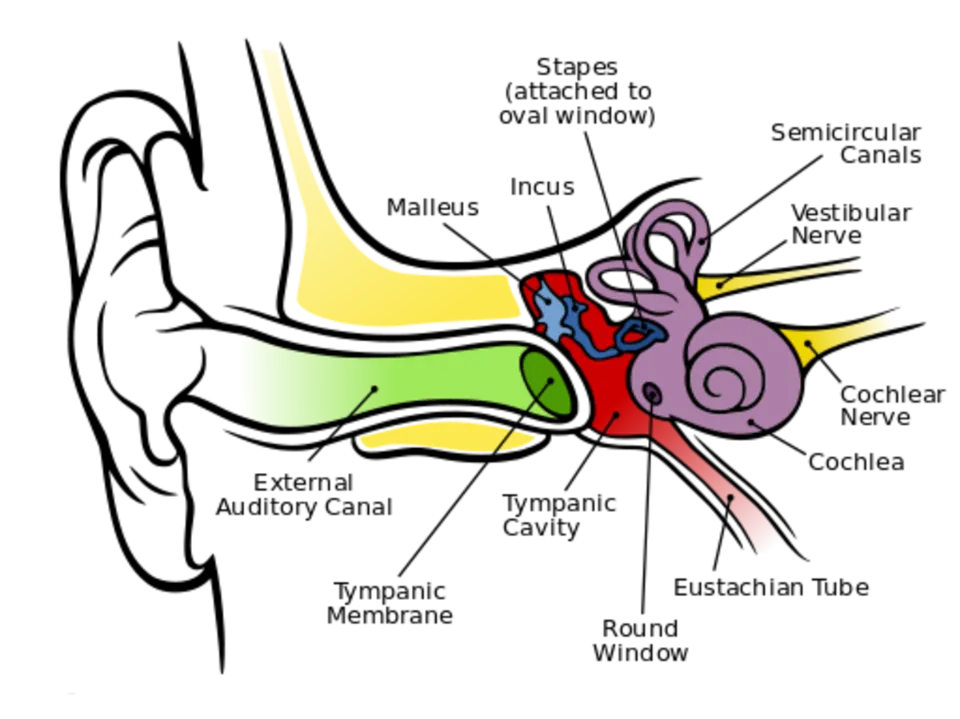The vestibular system refers to the balance-controlling components of the inner ear. This system has three liquid-filled loops (semi-circular canals) that react to head rotation.
The utricle and saccule, which sense gravity and back-and-forth motion, are located close to the semicircular canals. These organs send signals when the head moves, and the vestibular nerve carries those signals to the brain where they are processed.
Continue reading to learn more about ear maintain balance.
Read more: What Causes Balance Issues In Older Adults: 5 Ideas To Manage It – Elder VIP
What Causes Balance Disorders?
Dizziness is a feeling of being lightheaded, faint, or unsteady. The sensation of movement, whether it be within the body or in the surroundings, is known as vertigo. It has a rotational, spinning component. Unsteadiness, imbalance, or a loss of equilibrium are all considered to be in a state of disequilibrium, which frequently includes spatial disorientation. While vertigo is frequently caused by an inner ear disorder, the disequilibrium feeling without the spinning sensation is occasionally related to the inner ear.
Our sense of balance is controlled by signals to the brain from three sensory systems:
- Vestibular system – inner ear
- Vision
- Movement sensors found in the skin, muscles, and joints are called proprioceptors.
The vestibular system refers to the balance-related inner ear structures. Three fluid-filled loops (semi-circular canals) in this system react to the head’s rotation. The utricle and saccule are located close to the semicircular canals and sense gravity and backward and forward motion. The vestibular nerve carries these organs’ signals to the brain, which processes them when the head moves.

The brain determines the location of the body using data from the inner ear, vision, and proprioception.
Vision, nerves in the muscles and joints, and the vestibular system (inner ear) all contribute to keeping us balanced. The central vestibular system (brainstem) converts this sensory data into information that we can make sense of. Our bodies can adjust for variations in vision or nerve input, but abnormalities in the inner ear are more challenging to process, leading to the sensations of dizziness, vertigo, or disequilibrium.
What is the Vestibular System?
The vestibular system is a complex sensory system that regulates our balance and spatial orientation. The vestibular labyrinth, a portion of the inner ear, is where it is situated. The vestibular system consists of:
- Three tubes that are nearly at a 90-degree angle to one another make up the semicircular canals. Depending on the movement, each one can tell if someone is nodding up and down, shaking from side to side, or tilting from right to left. This is possible because the fluid that fills the semicircular canals moves through them in time with the movement that is being detected.
- There are two otolith organs, each of which is capable of detecting tilting motions, gravitational forces, and linear acceleration. The utricle and saccule contain calcium carbonate crystals that make up the otolith organs. Movement in the horizontal plane is picked up by the utricle, whereas movement in the vertical plane is picked up by the saccule.
These vestibular organs send information to the brainstem nuclei, which then relay it to other regions of the central nervous system where the cerebellum and cerebral cortex use it to coordinate movements. In order to work properly, the vestibular organs on each side of the head must communicate symmetrically with the brain.
How Does the Ear Maintain Balance?
Through specialized sensory cells that become active when you tilt or move your head, the vestibular system senses movement. The smallest head movements can cause significant discomfort to the vestibular system. It may take some time for your muscles to “settle down” after making significant, rapid, or prolonged movements (such as spinning around on the spot). For this reason, when we stop spinning, the room may still seem to be spinning. The vestibular nerve, which connects to the cochlear nerve and carries electrical signals to the brain, receives signals from the vestibular system.
While sensory input from touch gives us information about how our bodies are physically interacting with the environment, sensory input from vision gives us information about how an individual is oriented in relation to the world around them. Touch input can also convey direction and the type of surface we are standing on.
By detecting how our bodies are positioned in relation to gravity, the vestibular system aids in our ability to stay balanced. Additionally, it can convey sensory data about balance and motion. The cerebellum region of our brain can use this knowledge along with visual input from our eyes (to see where we’re going) and touch input from muscles and joints (which tells us about the position of parts of our body) to keep our bodies balanced. The cerebellum will communicate with the appropriate muscle groups to help you regain balance if it notices that you’re off-balance.
What Can Go Wrong With the Vestibular System?
In our everyday lives, the efficient operation of this complex sensorimotor pathway is crucial. Our sense of balance may be hampered if any of these elements are compromised. Injury, aging, drugs, and diseases can all compromise sensorimotor pathway components. When this happens, it is known as a vestibular balance disorder. Balance disorders can cause symptoms such as:
- A loss of balance
- Nausea
- Vertigo
- Sensation of floating
- Dizziness
- Disorientation
- Blurred vision
- Falling or stumbling
There are two common types of balance disorders, including benign paroxysmal positional vertigo (Meniere’s illness and BPPV.

Other Common Ear Problems
Some common ear problems include:
- Deafness can be severe or mild, permanent or temporary. This can be due to many causes, including aging, disease, and injury
- Ear infection – inflammation, often caused by bacteria
- Dizziness – this is often used to describe symptoms ranging from a sense that the patient or the room is spinning or moving (vertigo), to a loss of balance, giddiness, unsteadiness, light-headedness, or weakness
- Tinnitus – a sensation of ringing or other noises in the ears
- Wax: A buildup of wax has been known to temporarily impair hearing.
Summary
In particular, we will talk about the vestibular system in the ear and how it affects balance in this blog post about the relationship between the ear and balance. Our sensorimotor pathways include the vestibular system, which makes it an essential component of our central nervous system.



